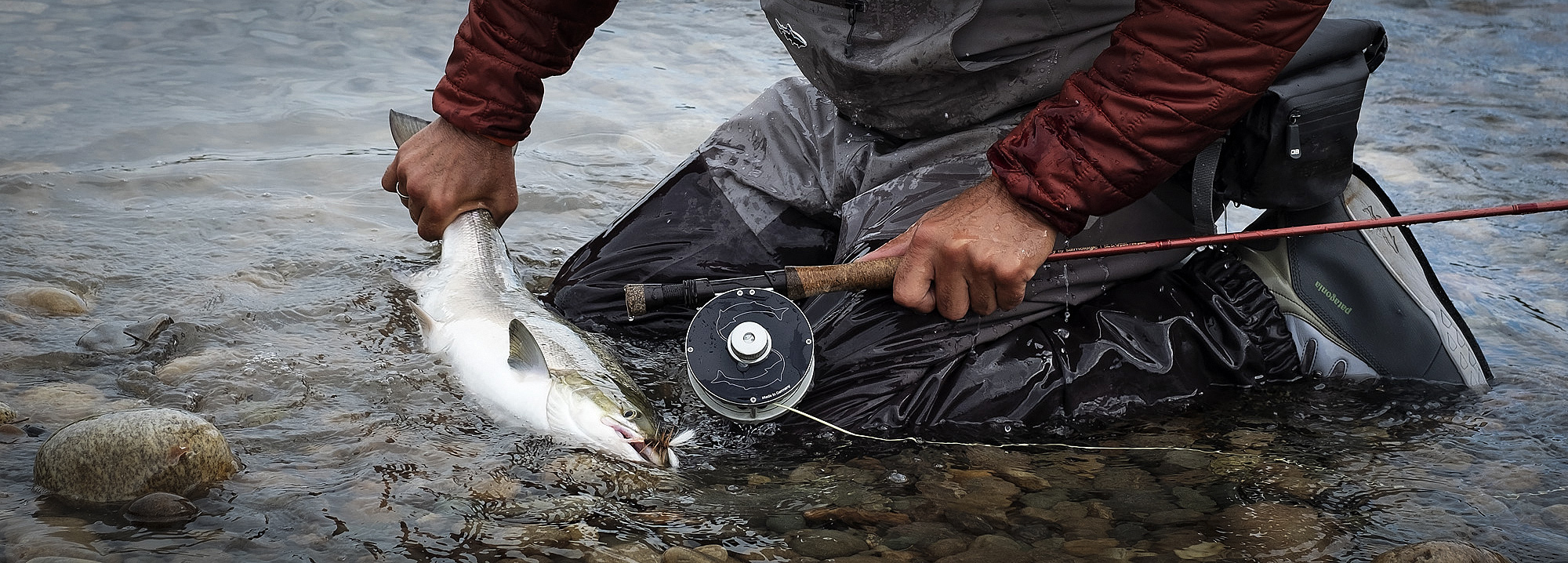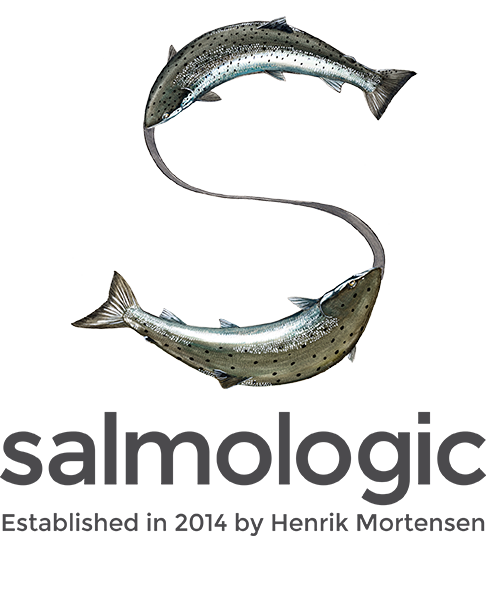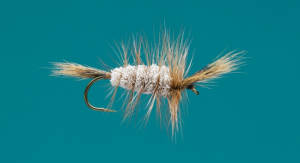
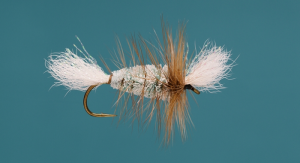
Dry fly fishing for salmon can result in high blood pressure – now you have been warned! Nothing is more exciting than seeing a salmon breaking the surface and closing its mouth around a dry fly.
When you have tried this once, a lifetime addiction is born, that is a promise!
For the past 20 years, 40% of my salmon fishing in the summertime has consisted of fishing flies on the surface. I have tried many different patterns over the years. The dry fly patterns we present to you here are the patterns that have proven themselves outstanding, under many different conditions.
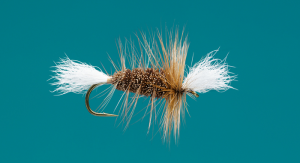
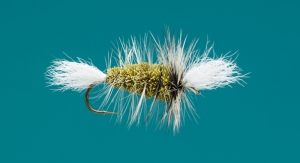
All our dry flies are tied in Canada; by a Canadian fly tier whose life has been all about dry fly fishing. The passion and the knowledge he has for dry fly fishing can’t be described in words! This is also the reason why we had our flies tied by him – we only want the best out there and in the highest quality! He made that happen.
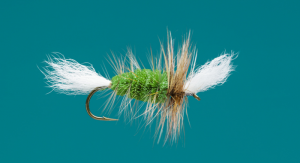
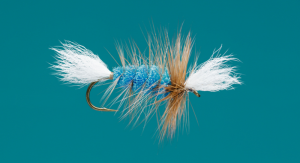
SAMLON DRY FLY -LABATT BLUE
The most important choice you have to make in picking the right dry fly for the day (based on the pool you are fishing, the depth of it, and the speed of the water) is the size of the fly. Therefore, I have added some really simple guidelines here, so you can choose the right size for you and your river.
A fact worth remembering is that dry fly fishing works best when the temperature in the river you are fishing is around 54-56 degrees Fahrenheit/12-13 degrees Celsius.
Another suggestion – which has made my dry fly fishing successful – is to try changing between different sizes, if a salmon has shown interest. It is also wise to give the salmon a short break now and then.
The faster the water is or the further away the fish are from the surface, the bigger the fly should be, to attract interest.
Dry fly fishing should always be done with a 10’ rod. The line should be a WF line with a short powerful turnover, which allows you to use a long nylon leader.
We recommend the following:
Single hand rods between 9’9″ and 10′ 16- 18 grams,
WF Shooter – floating,
Logic nylon leader 0.30 (minimum 3.8 meter).
Dry fly – small size:
- Season: Mid season. Cloudy weather – avoid windy days.
- Water conditions: Slow current – low water pools (1-2 meters).
- For line weight: WF – 16 grams/248 grains.
Dry fly – medium size:
- Season: Mid season. Cloudy weather – avoid windy days.
- Water conditions: Slow current or medium deep pools (2-3 meters).
- For line weight: WF – 16 grams/248 grains – 18 grams/278 grains.
Dry fly – large size:
- Season: Mid season. Cloudy weather – avoid windy days.
- Water conditions: Strong current or deep pools (4-6 meters).
- For line weight: WF – 18 grams/278 grains.

